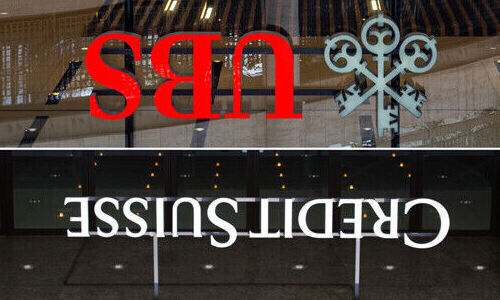With the takeover of Credit Suisse, its buyer UBS is in uncharted territory, forcing the bank's management to take an unconventional approach. Integration comes before the completion of the merger with the review of deals happening somewhere along the way.
UBS Group CEO Sergio Ermotti is playing fast and loose with Credit Suisse, setting an aggressive timeline for formally completing the takeover of Switzerland's second-largest bank by the end of May.
UBS confirmed as much yesterday, as reported by finews.com, saying it expects the legal closing of the transaction to take place in the next few weeks.
Traditional Five Steps
Surprisingly and at the same time, Ermotti decided UBS and Credit Suisse will operate as separate companies until further notice. Credit Suisse will continue to manage its businesses and clients under the watchful eye of UBS management with its managers for months, long after their shares have long since been exchanged for those of UBS.
With this approach, UBS is turning the traditional merger process on its head. As PwC outlines, such transactions usually take place in five steps. The buyer first conducts a preliminary review, then issues a letter of intent, following it up with thorough due diligence. If they find the target worthwhile, they negotiate with existing owners to acquire a majority or a controlling number of shares. The final step is integration if deemed appropriate.
No Interest in February
The Credit Suisse takeover defies this process only because the sale was mandated by the federal government and supervisory authorities as one of four rescue scenarios. Another added wrinkle is that never before have two banks critical to the global financial system merged.
It is instructive that as recently as February, UBS had no interest in taking over its competitor. Then in March, when Credit Suisse was caught up in the banking turmoil emanating from the US, UBS only had a few days to conduct a hasty initial due diligence before the takeover.
UBS bought virtually blind, and so demanded extensive collateral in return, which it got. Thanks to the 15.8 billion Swiss francs write-off of Credit Suisse's AT1 bonds, and at least nine billion francs in direct loss guarantees from the Swiss government, UBS has a thick cushion against losses. According to analysts at JP Morgan, the transaction would still be worthwhile for UBS even if it lost half of Credit Suisse's wealth management clients.
The Downside of Flexibility
Now UBS is conducting catch-up due diligence at flank speed. Backed by consulting firm Oliver Wyman, a hundred UBS bankers, known internally as the «clean team» are sifting through Credit Suisse's client relationships and businesses. The pace, however, is partly determined externally, since some foreign regulators have yet to approve the transaction, and some client relationships remain redacted and not visible to UBS.
Michelle Bereaux, the UBS banker appointed to be in charge of integration, will deal with this. If she gets the green light from the «cleaners,» she will merge Credit Suisse with UBS piece by piece. UBS retains the flexibility to outsource certain areas, sell them on the stock exchange or to third parties, or slowly digest them into the non-core unit.
The downside is that from today's perspective, it remains unclear what all will be taken over by UBS and how long the process will take. The original plan of UBS and Credit Suisse was to complete the merger by the end of this if possible. That plan is likely to wind up in the recycling bin.
Time of Twilight
Although UBS wanted to quickly create facts for clients, customers, and employees with the appointment of the future management and the targeted official merger by the end of May, Credit Suisse employees, in particular, are facing a long period in the shadows, as finews.asia observed in March.
The knowledge that the future Group Executive Board of the combined UBS/CS will include only one Credit Suisse manager, Ulrich Koerner, is unlikely to help reassure them.




































